Duho Pavilion Diary: Inside Limbo Accra’s Transformative Installation in Grand Cayman
By Dominique Petit-FrèreUnveiled at Palm Heights in Grand Cayman earlier this summer, Open Palm presents the Duho Pavilion, a monumental landscape installation conceived by Limbo Accra. Designed with landscape architect Malthe Mørck Clausen and curated by Keshav Anand, the installation builds on the spatial design studio’s unique approach to engaging with and reimagining in-between spaces. Delving further into the thinking behind the project, Limbo Accra’s Co-founder and Director Dominique Petit-Frère shares her insights with Something Curated in a special two-part series.
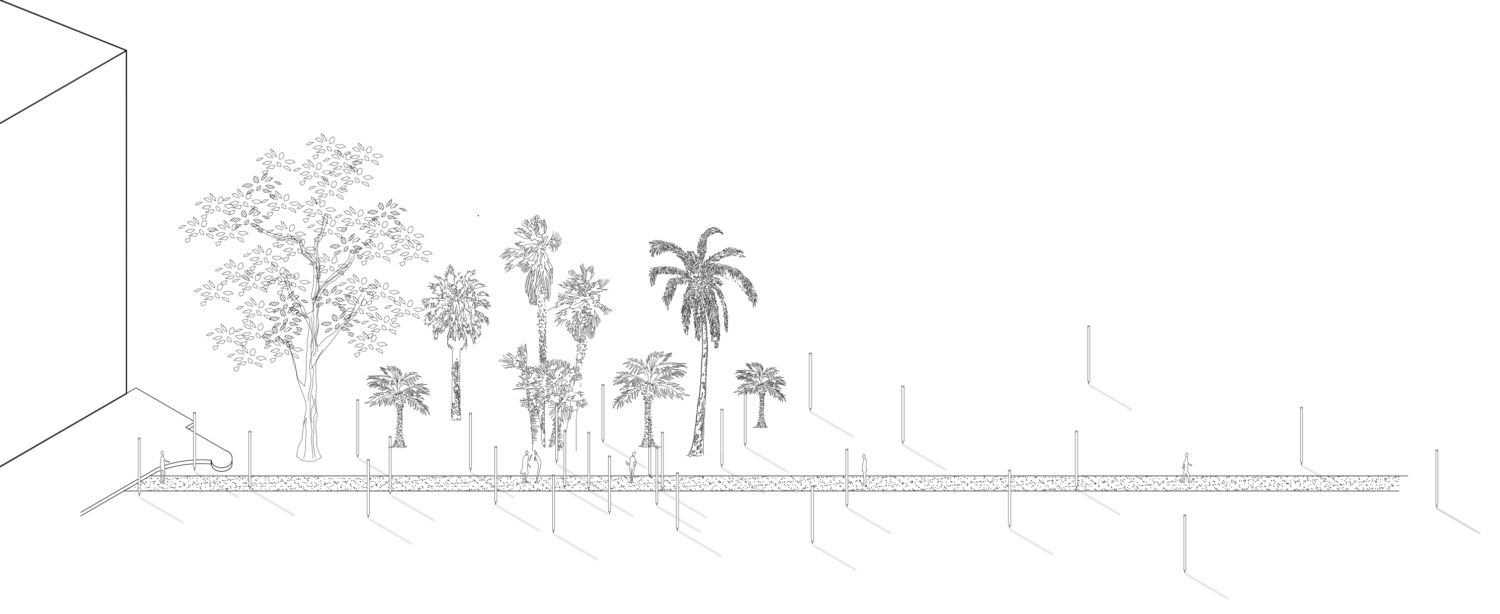
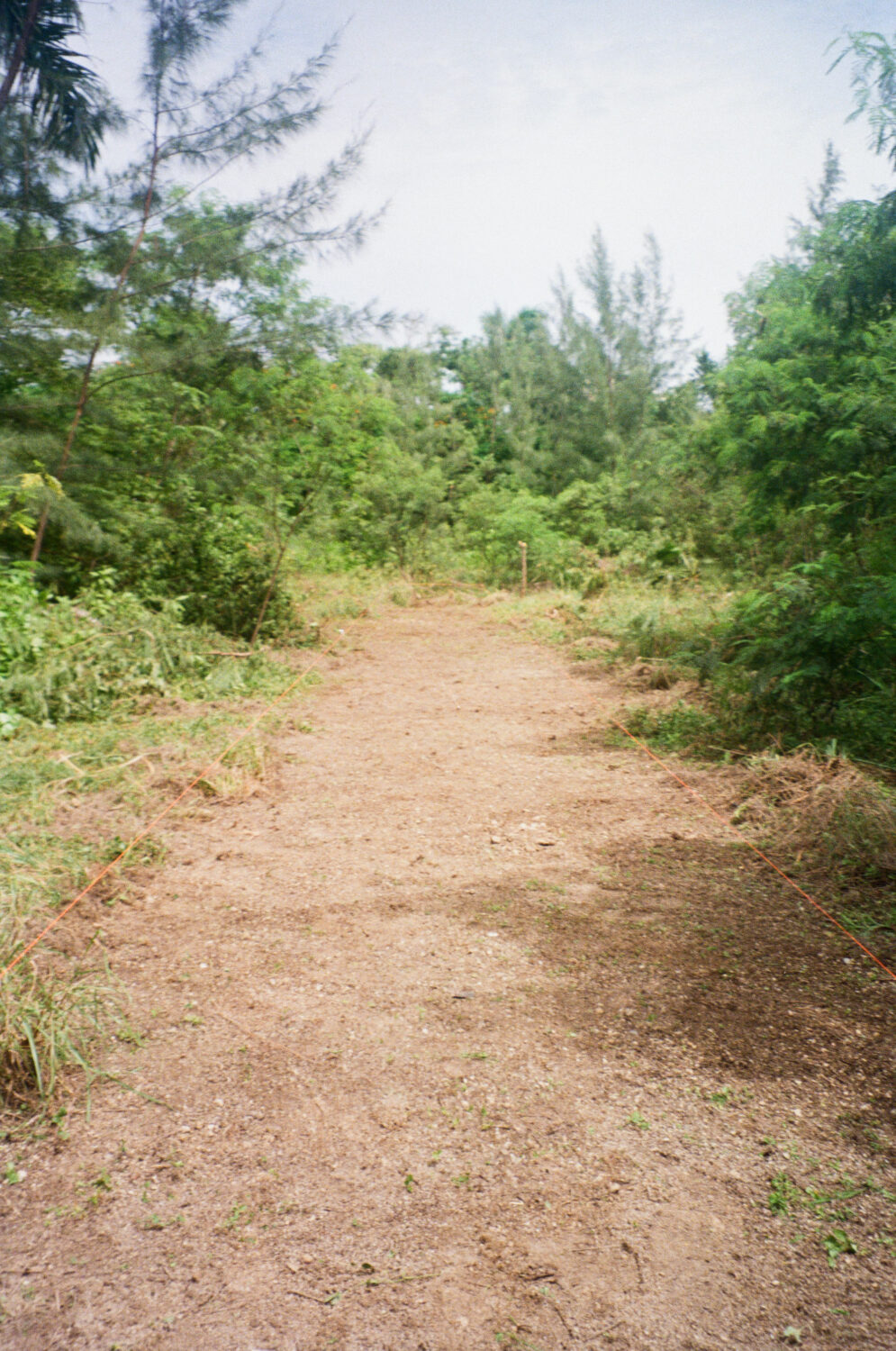
Reflecting on the journey of the Duho Pavilion, I’m struck by the question that has guided me throughout this process: What does it mean to exist between worlds? This thought has woven itself into every moment of the project, shaping my understanding on how history and contemporary realities intersect. In creating the Duho Pavilion, our goal was to explore how these different dimensions coexist and reveal deeper truths about our connection with voided landscapes that have been transformed and forgotten.
Being on-site, surrounded by the dense overgrowth of the abandoned building, I was struck by how much this place speaks to my own relationship with land. As a first-generation New Yorker with roots in Ghana and Haiti, the complex geographies from the Atlantic coast and into the Caribbean sea deeply informed my reason for being here. Wandering through the mangroves, I can almost hear my family’s stories intertwined with the rich history of the archipelago. The Taínos, who once thrived across these islands, existed in a similar threshold, their presence felt even in their supposed erasure.
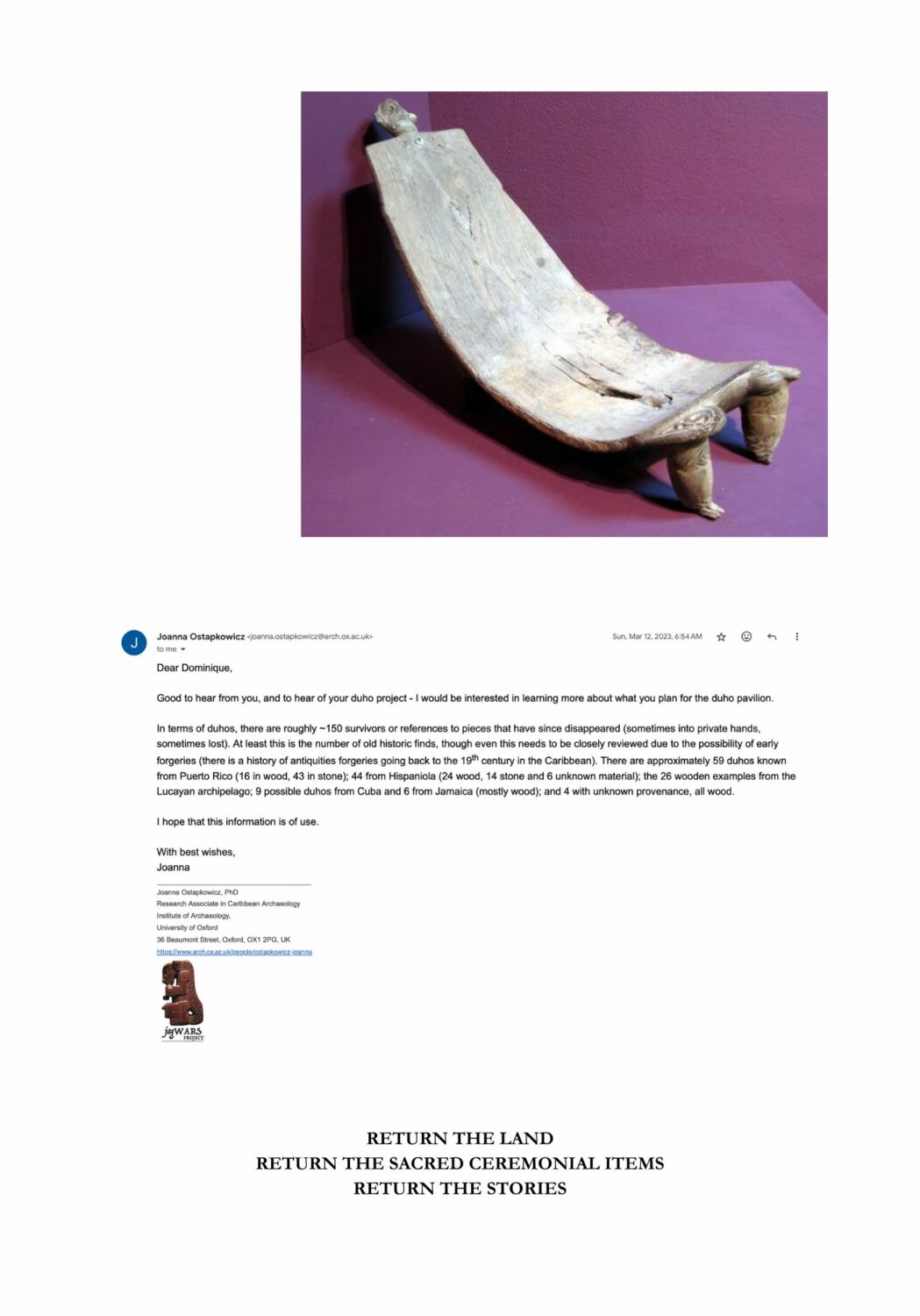
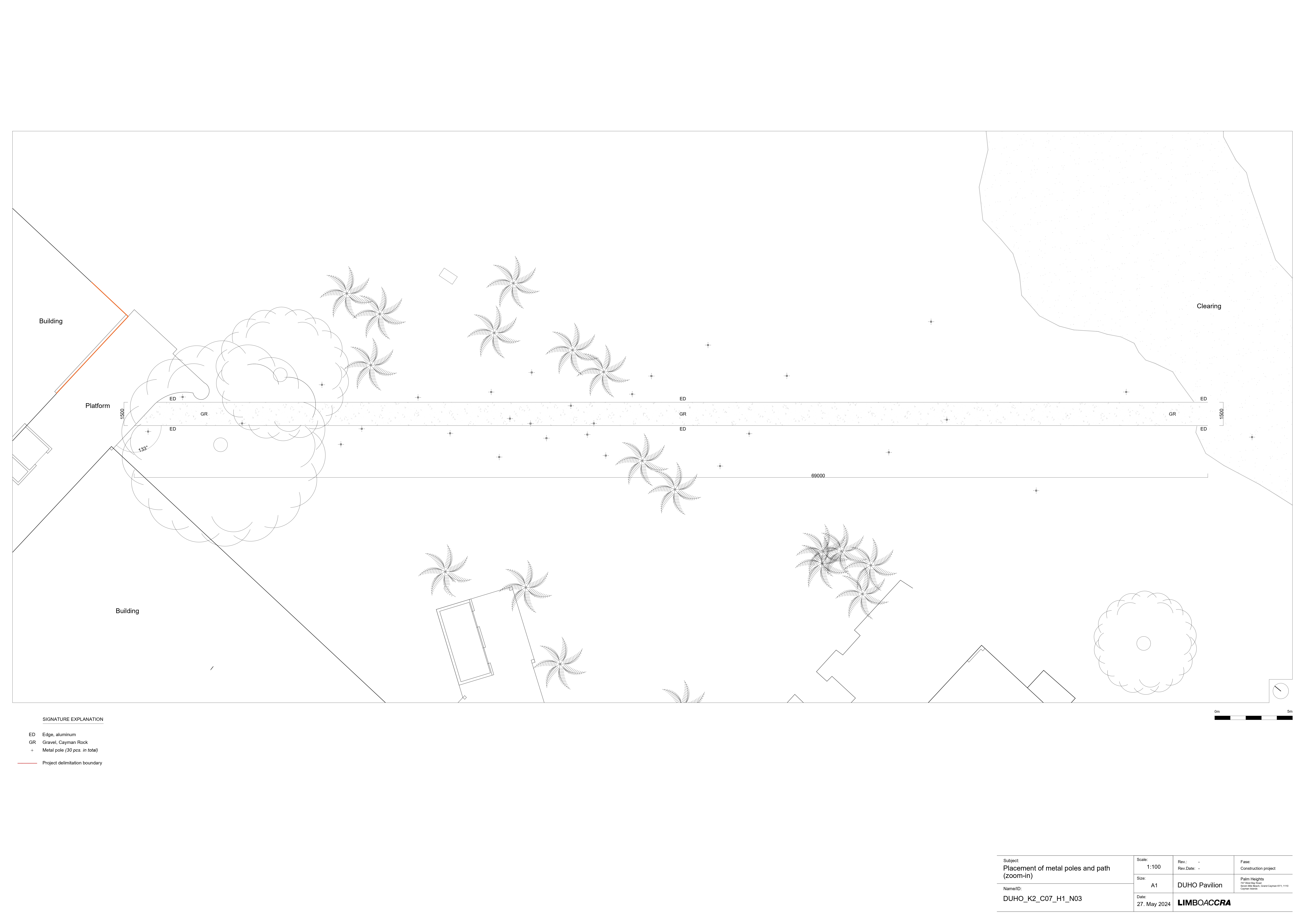
Courtesy Limbo Accra
Their influence lingers in our language and the artefacts they left behind, like the sacred Duho stools, kept alive in private and public collections. The Duhos were ceremonial seats used by the Taíno chiefs (Caciques) intricately carved from local guayacan wood or stone, often shaped like anamorphic creatures standing on all fours. These stools served as conduits connecting the spiritual and earthly realms. Reimagining them in our project felt like a powerful connection to the legacy of the region.
Collaborating with landscape architect Malthe Mørck Clausen, we designed a space that both respected the region and honored the site’s transformation as a microcosm of a tropical forest for plant and non-human species. Our goal was to create a simple gesture and carve a direct access through this new ecosystem using local Cayman gravel to form the path.
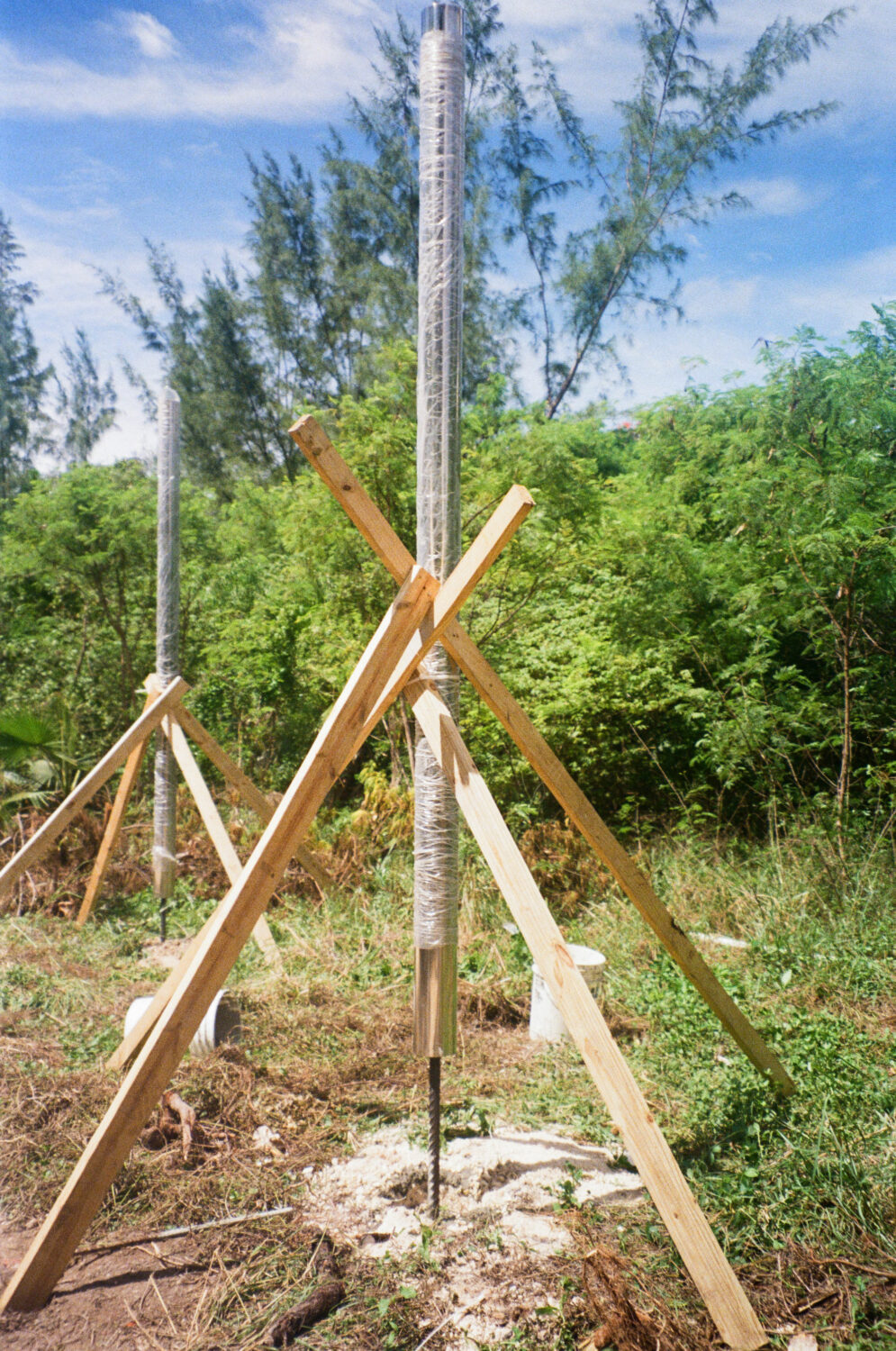
Over five intense days with a team of builders from Jamaica, we installed thirty reflective aluminium poles along the path, each symbolizing five displaced Duhos. These aluminium poles mirrored the interplay between the natural landscape and the deteriorating architecture. In this space, our vision was to create a crossroads between an archaeological site and a speculative future, a place for reflection where one could contemplate on what persists as structures of power.
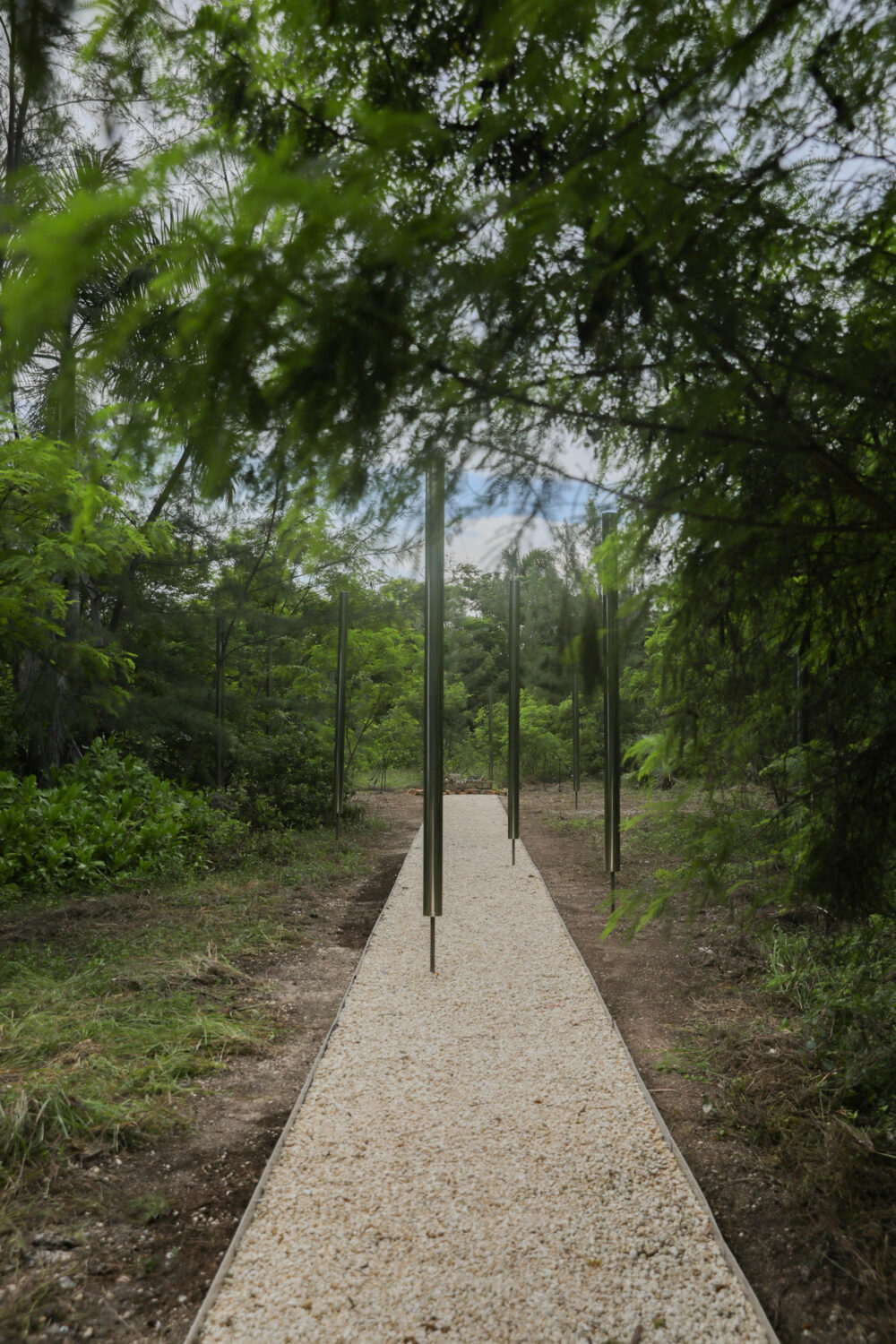
The Duho Pavilion has become more than just an architectural intervention — it is a personal exploration of time and transformation. In its quiet, contemplative presence, the pavilion becomes a mirror and a space where the echoes of history and the whispers of what might come, come together, inviting visitors to pause and consider their own place within this continuum.
Feature image: The Duho Pavilion by Limbo Accra. Photo: Cat Morrison. Courtesy Open Palm / Palm Heights, Grand Cayman